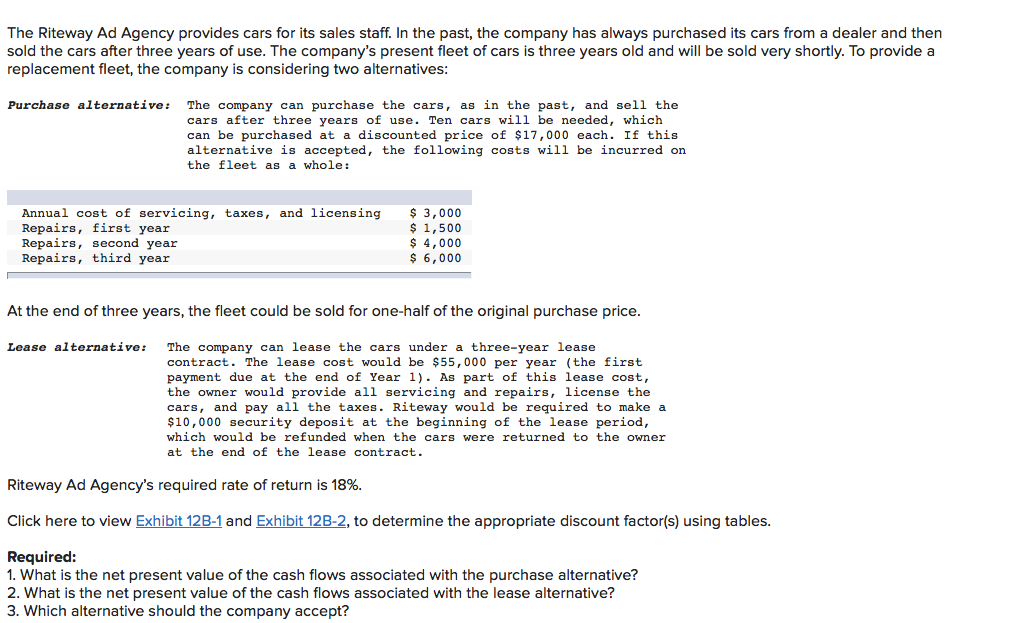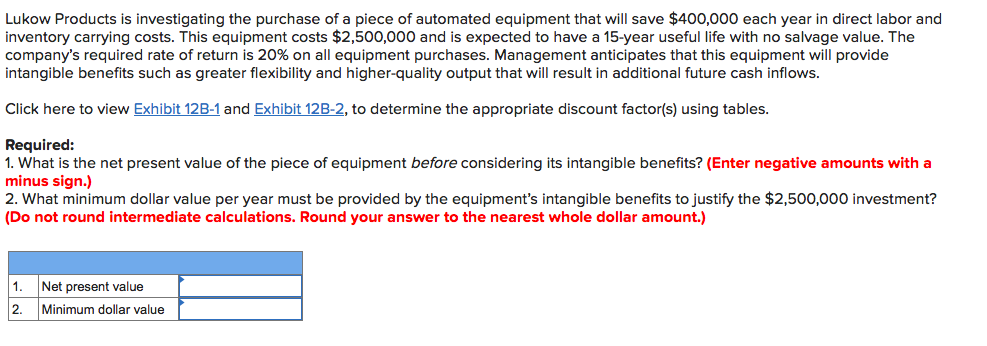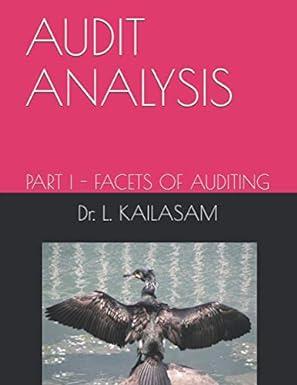

The Riteway Ad Agency provides cars for its sales staff. In the past, the company has always purchased its cars from a dealer and then sold the cars after three years of use. The company's present fleet of cars is three years old and will be sold very shortly. To provide a replacement fleet, the company is considering two alternatives: Purchase alternative: The company can purchase the cars, as in the past, and sell the cars after three years of use. Ten cars will be needed, which can be purchased at a discounted price of $17,000 each. If this alternative is accepted, the following costs will be incurred on the fleet as a whole: Annual cost of servicing, taxes, and licensing Repairs, first year Repairs, second year Repairs, third year $ 3,000 $ 1,500 $ 4,000 $ 6,000 At the end of three years, the fleet could be sold for one-half of the original purchase price. Lease alternative: The company can lease the cars under a three-year lease contract. The lease cost would be $55,000 per year (the first payment due at the end of Year 1). As part of this lease cost, the owner would provide all servicing and repairs, license the cars, and pay all the taxes. Riteway would be required to make a $10,000 security deposit at the beginning of the lease period, which would be refunded when the cars were returned to the owner at the end of the lease contract. Riteway Ad Agency's required rate of return is 18%. Click here to view Exhibit 12B-1 and Exhibit 12B-2, to determine the appropriate discount factor(s) using tables. Required: 1. What is the net present value of the cash flows associated with the purchase alternative? 2. What is the net present value of the cash flows associated with the lease alternative? 3. Which alternative should the company accept? Lukow Products is investigating the purchase of a piece of automated equipment that will save $400,000 each year in direct labor and inventory carrying costs. This equipment costs $2,500,000 and is expected to have a 15-year useful life with no salvage value. The company's required rate of return is 20% on all equipment purchases. Management anticipates that this equipment will provide intangible benefits such as greater flexibility and higher-quality output that will result in additional future cash inflows. Click here to view Exhibit 12B-1 and Exhibit 12B-2, to determine the appropriate discount factor(s) using tables. Required: 1. What is the net present value of the piece of equipment before considering its intangible benefits? (Enter negative amounts with a minus sign.) 2. What minimum dollar value per year must be provided by the equipment's intangible benefits to justify the $2,500,000 investment? (Do not round intermediate calculations. Round your answer to the nearest whole dollar amount.) 1. Net present value Minimum dollar value 2








